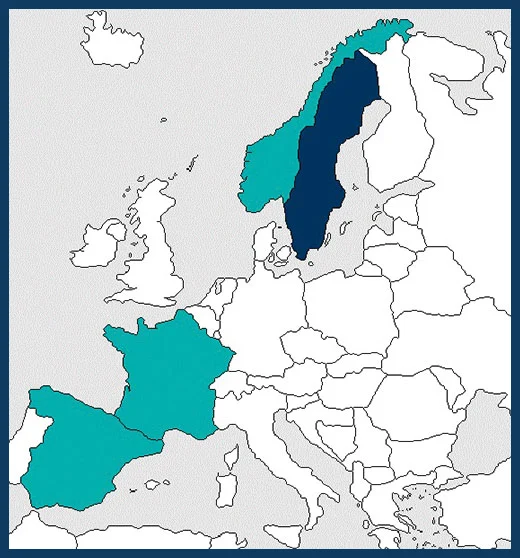12-2016 to 12-2019
€ 1,184,473
Prof. Göran Englund
goran.englund@umu.se
Umeå University, Umeå, SWEDEN (Coordinator)
Institut de Recherche pour le Développement, Marseille, FRANCE
Norwegian University of Technology and Science, Trondheim, NORWAY
Norwegian Institute for Nature Research, Trondheim, NORWAY
University of Girona, Girona, SPAIN
Luleå University of Technology, Luleå, SWEDEN

Anthropogenic fragmentation has particularly strong effects in dendritic networks, like river-scapes, where there is only one connecting route between two locations. Man-made obstacles, such as dams and weirs, often form absolute barriers for upstream migration, with many negative effects on fish communities. Restoring connectivity by removing barriers is thus important for improving the functioning of stream-lake networks, but may have unwanted side-effects by facilitating the spread of invasive species. We have therefore named the project ODYSSEUS in reference to the dilemma faced by Odysseus when navigating between Scylla (a six-headed monster) and Charybdis (a whirlpool) in the narrow strait of Messina.
The overarching objective is therefore to provide a decision support system for the management of connectivity in the form of interactive maps of river-scapes. The maps will be provided as a web service and show local slopes, colonization probabilities, and extinction risks for different management scenarios proposed by the user. The decision support system will be developed for Scandinavia, where much of the required infrastructure in the form of high-resolution geographic and ecological data is available. An important sub-objective is to provide a road map for the development of similar systems for other EU-regions.
The requirements in the form of data and models that underlie the decision support system are extensive. Important project activities are thus the development of ecological and geographical databases and models as well as their integration and implementation in a web service:
• Quantification of the ability of important native and non-native species to pass barriers and colonise.
• Quantification of relationships between fragment size and extinction rates for these species.
• Studies of how the effects of connectivity interact with other anthropogenic stressors such as drought, water quality, climate change and invasive species.
• Development and implementation of a web service that allows managers to investigate the ecological consequences of connectivity modifications.
The development and implementation of the decision support system will benefit from a close dialogue with regional and national managers of connectivity. When evaluating the consequences of proposed modifications of connectivity, it is often necessary to consider the social dimensions of the problem, including the perception of different species and barriers. Activities focused on stakeholder involve- ment will therefore include:
• Workshops where the design and functionality of the web service is discussed by connectivity managers and researchers.
• A study of the dialogue between scientists and managers
• A study of how the local perception and value of species and habitats differ between groups of end-users in different regions.